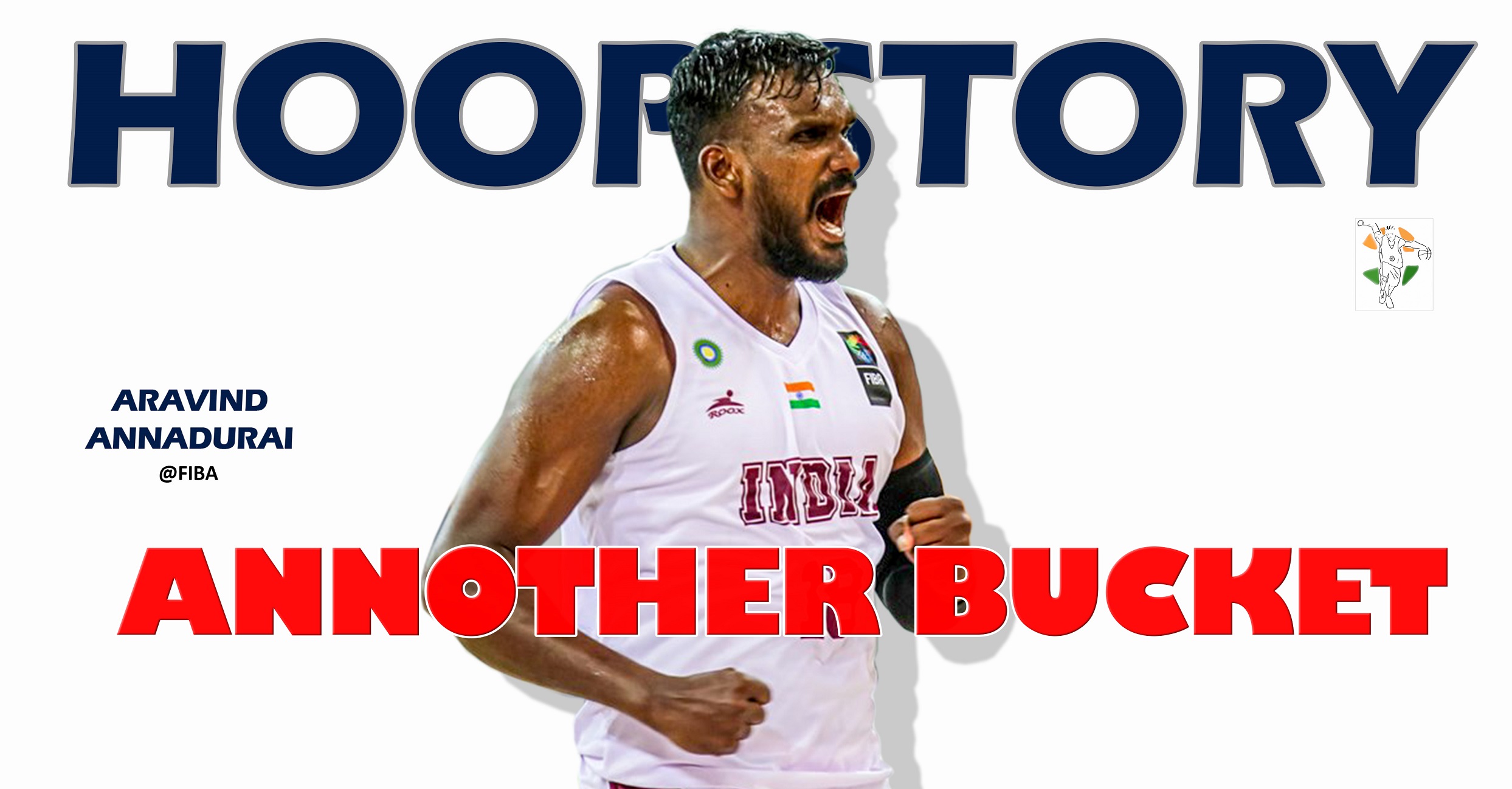
Some of India’s best basketball players hail from Tamil Nadu and Punjab. While the two states are over 2,000 km apart, there is a common thread unifying some of our basketball stars from these states amidst the richness of their cultures. These threads are woven across fields of rice, wheat, cotton, sugarcane, maize, and more. Fields on which some of our basketball stars up north and down south grew up.
Aravind Annadurai is no stranger to life in the fields. Rice farming is the primary occupation of the inhabitants of Thanjavur district in Tamil Nadu, including Annadurai’s father. Although this 6’7” forward is doing all he can to put hoops on the map, whatever obstacles may come his way.
When one has been knocked down again and again with injuries that have been career-defining or career-ending for many, it takes a resilient spirit to keep reinventing your physical self to play the game you love. Annadurai has had more than his share of injuries, surgeries, and setbacks. A burned hand dreads the fire and shies away from it. But when the flames inside you burn a brighter inferno than the embers outside, all external obstacles can do is stoke the fire inside you to make you a Human Torch.
In spite of his injuries, Annadurai plays like a force of nature on both ends of the floor, shining in his role as one of the most consistent players on the Indian national basketball team. Here’s his story.
Win or go home
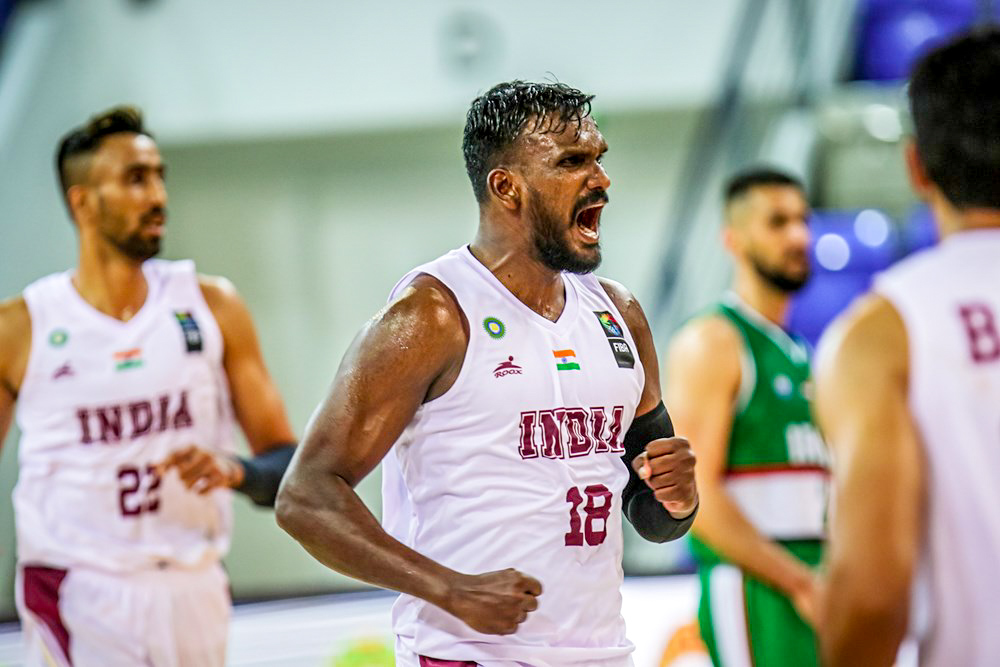
The stakes could not be higher for India and Iraq in the group stages of the FIBA Asia Cup 2021 qualifiers in February 2021. Both teams were in Group D with Lebanon and Bahrain. Lebanon finished undefeated at the top of the group, while Bahrain held the 2nd spot. With the top two teams from each group automatically qualifying for the FIBA Asia Cup, the six 3rd place teams from each group would get a final qualifying attempt with four of these six going through to the 2021 FIBA Asia Cup. That's what India and Iraq were battling for. The winner would punch their ticket for a final opportunity to qualify in August among the other 3rd placed teams. The loser’s campaign would end with the final buzzer.
Both teams had played four games in the qualifiers up to this point and needed a win to keep their dreams alive. India got off to a hot start early, but the entire offense sputtered to a halt after Jagdeep Singh hit a 3-pointer with 8:31 left in the 3rd quarter. India did not score a field goal for the next four minutes as Iraq chipped the lead down to 52-49. In dire need of a bucket, here are the next four baskets by the Indian team:
When the team needed a bucket, Annadurai scored 6 quick points and forced a turnover for a score in transition. Cut to 4 minutes left in the 4th quarter. The game is coming down to the wire, teams trading blows with India leading 71-69. Here are the next three buckets for India-
With 45 seconds left in the game, Iraq fought back to tie the game at 78 with a 3-pointer from Karrar Hamzah. Both teams exchanged misses and Iraq gained possession with 21 seconds in the game. Here’s how the last few seconds unfolded.
“The score was tied and Kevin Galloway had the ball for Iraq,” recalls Annadurai. “Amjyot was guarding him. As Kevin drove in, I saw a chance to pressure him and we got the ball. I just ran ahead when we got the ball and saw Vishesh shoot, I knew that if he misses, I have to put it inside. But by the time I got near the rim and jumped, the clock showed zero so I pulled my hand back. By God's grace, he made that shot. Later, I saw the video and realized how fast it all happened.”
This was as dramatic an ending as any basketball game can have. Jeremy Lamb’s jump shot from the backcourt comes to mind, but that was more of a set jump shot, more difficult than a running floater. Jerry West’s 60-footer from the backcourt is similar to Bhriguvanshi's in the way both players shot the ball. That moment stands as one of the Top NBA Finals Moments of all time.
While Vishesh’s shot was not on as lofty a stage like the NBA Finals, it stands as one of Indian basketball’s greatest shots of all time. He had made timely plays on both ends in the fourth quarter to put the team in a position to win it. For the game to go down to the wire, we needed Muin Baig leading the way with his red-hot shooting, putting up a team-high 22 points, shooting 3 of 3 from downtown, and dishing out 7 assists. Annadurai was his usual efficient self. Twice, Iraq cut the lead down to under 4 points, both times Annadurai made plays on both ends to help India pull away. He finished with 12 points, shooting 5/5 from the field while playing the 2nd most minutes on the team.
Looking at Annadurai driving to the hoop with abandon, absorbing contact and bouncing off the floor, you’d be hard-pressed to tell that this is the same individual who has had multiple surgeries that left him unable to walk for months at a time.
Knocked down, but not out

If you play basketball professionally, it's not a matter of if you'll get injured, it's when you'll get injured. Once you are out of action with a serious injury, it can take months for you to get back into action. The road back to recovery can be long and arduous. There is nothing exciting or fun about rehab. You cannot do the basic movements that you took for granted. You may have been jumping out of the gym for high-flying dunks, but an injury can reduce you to a state of having to walk with the aid of crutches.
Annadurai had to face and overcome multiple injuries from early in his pro career. As a teenager, he had made it to the junior Indian camp and was trying out for the senior team. The players had a break for 10 days, during which time Annadurai came back to Chennai to play in an All-India Tournament for his college, “I was 19 years old at that time. I got injured in the last four seconds of the game. It turned out to be an ACL tear in my right knee. I could barely do anything for six months. It took me 9 months to get back to the court.”
Setbacks can set you back or be taken as opportunities to bounce back higher, that’s what Annadurai did. “I used to be very lean. After my first injury, I focused on getting stronger while rehabbing.” He rehabbed and came back strong after a year, this time fate struck in the finals vs Uttarakhand. “I was playing very well in the game. I got hurt in the final seconds once again. It took me a year and a half to rehab and play again. I came back home to rehab. It was a very hard and isolating time. I couldn’t walk without crutches for two months. I could hardly meet anyone or do anything.”
The next four years were without any major injuries. Annadurai made a name for himself along the way. He burst onto the international stage in the 2015 SABA Championships, becoming the 2nd leading scorer for India in the tournament while averaging 11.3 ppg. He'd go on to put up more 20 point outings for India in various competitions like the Commonwealth Games, FIBA Asia Cup, FIBA World Cup Asian Qualifiers.
“I injured my ACL (left knee) in 2018 after Commonwealth Games. This time it took a year and a half for me to get back.” Do I tell my family? Annadurai had a decision to make while having knee surgery. He could keep his family in the loop, but his mother was also in the hospital at that time. Or he could tough it out on his own through a process that resulted in him being unable to walk for weeks. “I did not want to stress my parents out or have them have to take care of me along with my mother who needed us more. I got my surgery in Mumbai without telling them and came back to Chennai. "
“It took me one month before I could walk properly this time. I stayed away from my family for a while as I recovered. I'm so grateful to my friends and senior players, they helped me rehab while I was injured and recovering. Only then did I come back home and tell my parents 'I just had surgery'. They felt bad (laughs) Why didn't you tell us! I was really happy that when they found out, they didn't say Don't play. They said, Play hard! If you get injured, if anything happens, we are here for you."

I’d like to take a moment here, to shake my head at montages in sports movies. You know the ones, where the protagonist has to rehab to fight back from an injury. Eye of the Tiger plays in the background as the protagonist grimaces with each step. He/she stumbles, falls, waves away the helping hand of a concerned supporting character, and gets back up on their own. They are then shown going through a handful of drills in succession as up-tempo music plays. As the song concludes, the athlete is back to their fighting form as they walk in some direction in slow motion towards triumph.
Rehab in real life has no room for any inspirational montage. It’s boring, repetitive, tedious, basic, and repetitive. It’s so repetitive you have to repeat yourself to drive home how repetitively boring it is. "The rehabs feel really long, having had surgery after surgery,” Annadurai says. “There was a time I could only see bones and skin, I had to work to make the muscles grow. It was very boring at the start. When I was injured, I could not ride my bike. I would walk to the rehab center nearby. After a few months, I could go cycling. I would stand and shoot while someone helped me by rebounding and passing the ball to me.”
Here are the late great Kobe Bryant's thoughts on rehab, and this is a man who spoke about the joy of the pursuit being in the journey and not the destination.
"When you're in the weight room every day rehabbing, it's boring as hell. Although you're with the team, you're kind of away from the team. You're not on the same schedule, you're not doing the same things. That can get a little challenging. It's a lot of being patient, doing physical therapy every single day, and it's boring, its really boring, really, really boring, but you have to be able to find small little challenges everyday boring stuff because that is what will get you to where you wanna go."
Kobe Bryant.
You have to wonder what drives someone to keep pursuing greatness after being knocked down time and time again. “I like to play, if I can’t play, I feel bad. You work hard daily, prepare well, and keep improving. I love that process and the teamwork,” says Annadurai. “If I can come back from injuries and play hard, a lot of junior players can also learn from me. They will also not be scared of injuries and know that they can fight back strong.”
Even as he continues to blaze his own path, Annadurai is paving the way for the next generation of resilient Indian basketball players. His path in basketball started with a detour with advice from his uncle. Observing his height, his uncle encouraged him to switch from playing kabaddi and to take up basketball back in 2006. He started his training at the Sports School in Coimbatore for a couple of years before joining SAI Sports Center in Mayailaduthurai and training with coach Coach Baskar Sappaniambalam, who has also coached the Indian team.
“When I first started playing basketball, I used to play like a forward. Coach Baskar taught me to play from the outside, to play from the outside-in, and have more of an all-round game. I spend a lot of time practicing the fundamentals. Before and after practices, I work on the basics like board tapping, ladder movement, and other drills," says Annadurai.
It wasn’t long before he displayed his potential in basketball by representing Tamil Nadu and winning gold in the 2011 Youth Junior Nationals. Annadurai’s game started to take shape with him joining the Indian Overseas Bank basketball team and coming into a strong basketball culture.
IOB – a basketball culture

Having joined the IOB team as an 18-year-old under coach Azeez Ahmed, Annadurai came into an environment where he could train with and learn from an experienced coach and veteran players, many of whom played for the Indian basketball team, one of whom had a deeper impact on his career. Annadurai was a tall but lanky teen used to playing the center position, coming to a team that had its share of big men. IOB veteran Mihir Pandey could relate, “I mainly played as a center when I joined IOB. As we had tall players like Sozhasingarayer Robinson, I thought I should switch to playing power forward,” says Pandey.
Basketball teams have scheduled practices where the players get together and work out. Then there are assigned sessions from the head coach/strength coach, or others. For the great players, these scheduled team and individual practices are just the tip of the iceberg, the greats are the ones who put in the time to have multiple training sessions in a day, hungry and striving to improve.
“Mihir bhaiya really taught me a lot, I'm grateful to him for all the time he gave me. Things like, how to receive a ball, how to move without the ball, we'd go over these again and again till I got it right before our usual practices. After practices he taught me how to play in the post, how to take rebounds, and more.”
- Annadurai
Pandey had played for the Indian basketball team and brought a veteran presence that helped channel Annadurai’s energy towards his potential, although he's quick to dismiss any credit. “We have worked together thoda bahut. But sikhane waale se zyada important seekhne waala hota hai. Ki usme kitna lagan hai to learn and improve. (More than the one teaching, the one who is learning is more important, how driven they are to learn and improve),” says Mihir of Annadurai.
“He’s a very quick learner and has a lot of interest in learning. Anything he works on, he picks up quickly. But the main thing with Arvind is that he's a fighter, that's what I like the most about him," adds Pandey. "Even after multiple surgeries, he's still fighting to perform and get better. Some players, when they make it big, be it in India or anywhere in the world, they may feel ki ‘I know more than enough.’ They don't look to improve constantly. He’s always learning to improve.”
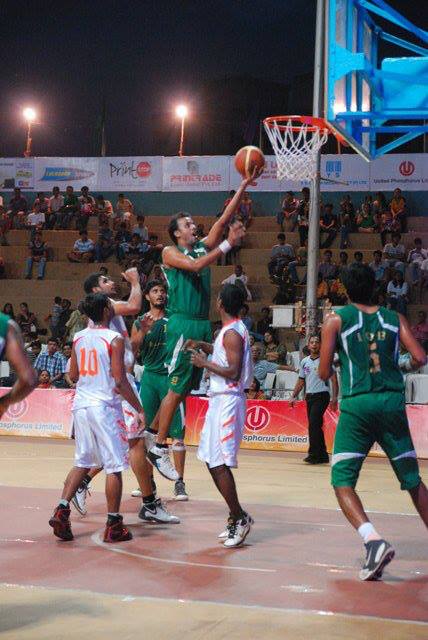
IOB basketball team is a team in the true sense of the word, on and off the court, like most great teams are. “We often come to practice together, train together, leave the ground together, eat together. Having that team spirit off the court carries on the court too. ” says Pandey.
Different teams have different identities, some are geared towards high-powered offense, some hang their hats on defense, some are fluid and adapt to the players they have while others have a system for which they get like-minded players. IOB has a one-for-all, all-for-one approach when it comes to basketball. “With IOB, you will rarely see anyone needing to score 30 points. It’s a very balanced attack. When we have really strong offensive players, some of the others happily take a back seat on offense and try to get those scorers going by setting screens and helping make plays,” Pandey says. This was an ideal environment for a young basketball player like Annadurai to come in and find who he is going to be as a basketball player and a person.
The training sessions were demanding and grueling, geared towards pushing the players to keep finding ways to improve. "We go hard with full intensity in practices. When you are on the practice ground, each and every step is an opportunity to learn, you have to understand that every step can teach you something. When we are on the basketball court, 4-5 hours can just fly by. Time is limited in every way, you have to make the most of it," says Pandey.
Being a fan of LeBron James, Annadurai has worked towards becoming as complete a player on both ends as he can, driven by the sole goal of helping his team win. Basketball at its core is simply about putting the ball in the hoop and scoring more than the other team. When you start peeling back the layers, there’s no end to that string. The game is as complex as any scientific pursuit and as colorful an outlet for creativity as any easel. It is the reason why teams scout players not just by their skills and performance, but also by their drive, character, ability to make quick decisions, process information, be a team player, and so much more. With each of the simple actions of the game having deeper layers behind them, here’s a glimpse into some of the nuances of basketball Annadurai has strived to grow in.
“I always want to play hard defense, get rebounds and help the team.”

When the Milwaukee Bucks won Game 4 to tie the NBA Finals with the Phoenix Suns, the Suns shot 51% from the field, 11% better than the Bucks. Where the Bucks seized advantage was on the offensive glass, pulling down 17 offensive rebounds to 5 for the Suns. They also forced the Suns into 17 turnovers while giving up just 5. If you can control the glass and force your opponent into turnovers, you can tip the scale in your favor by getting extra possessions regardless of how well you shoot. That’s a scale that Annadurai goes full throttle to push.
Annadurai is 2nd among Indian players in rebounding in the 2021 FIBA Asia Cup qualifiers, and he leads the team in offensive rebounds per game with 2 rpg. “I just love to take rebounds, it’s something I work on a lot. I focus on different ways I can get to the ball, with one hand or two hands. If someone tries to push me out, I hold my ground and try to find ways to get around them,” says Annadurai. While he's is his usual tenacious self on defensive boards, he’s equally hungry to nab rebounds on offense. “Offensive rebounds let you keep the play alive and get another possession,” he adds matter-of-factly.
As players age and overcome injuries, at times they tend to put self-preservation above hitting the floor for a loose ball. This isn't selfishness at play, players understand that the best ability is availability and they have to pick their spots to go all out. If LeBron James had not hit the floor for a loose ball vs the Golden State Warriors back in 2018, he may not have suffered a groin strain that put him out of that game. But then they are players who only know one way to ball, all out. Annadurai is cut from the same cloth.
“When the game starts, injuries don't affect me,” Annadurai says. “I forget everything and just play hard on both sides. If I play strong defense, then I end up playing strong on offense also.” While offense attracts eyeballs, defense and hustle are what help win championships. The offense can come and go, shots may not fall on some nights. But you can control your effort on defense and be consistent on that end. Being 6’7” Annadurai is big enough to hold his own in the post and mobile enough to stave off drives at the perimeter. He leads India in steals, averaging 2 swipes per game in the FIBA Asia Cup qualifiers. None timelier than the turnover he and Amjyot pressured Galloway into to help India pull away from Iraq. Steals also help spark fast breaks, something our younger legs are eager to feast on.
Pushing the pace on fast breaks is something IOB as a team has been adept at for a while. “When Robinson would get a defensive rebound, he would pass the ball to the point guard,” Pandey says. “I’d get across half-court by that time and the next pass would usually be to me. That let us get into our offense early.” Annadurai’s initiation into professional basketball put him in a similar role. “In IOB, I was initially asked to focus more on rebounding and defending,” Annadurai says. “I’d get the rebound and fly down the court to try to get a quick score.”
One of the joys of watching Annadurai play is keeping an eye on him in transition opportunities, with the anticipation of watching a 100m race. He starts running behind the opponents and usually beats them down the court. “After getting a rebound, I like to just move fast. My man is usually slower if he’s a big, and there's only a short man in front, he can't stop me,” says Annadurai.
Always on the move
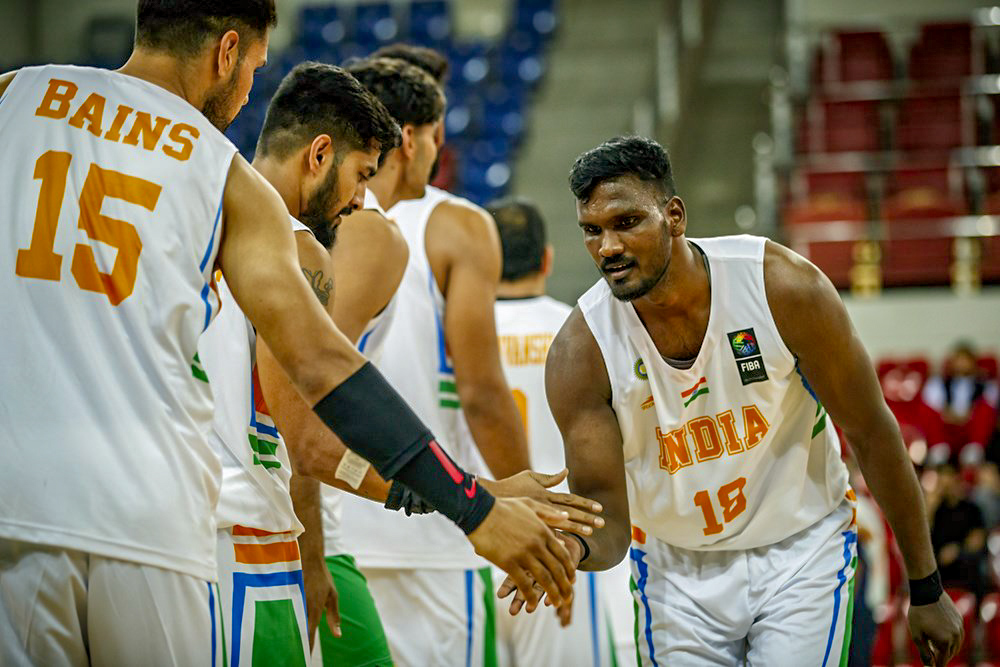
“You HAVE to learn how to play without the basketball,” stressed Pandey to a younger Annadurai in their early days. “The player with the basketball is dangerous, but the player without the basketball can be even more dangerous. If you are helping your team convert without having to have the ball, that can really help,” adds Pandey.
Basketball has no room for standing still. The more you and the ball move with a purpose and plan, the better opportunities arise for you to take advantage of. This is a game of chess where the pieces are always in motion, and every second changes the geometry of the chessboard, giving rise to new opportunities for you to take advantage of. This is where players who are active without having the basketball can be so useful, because unlike a chess piece which can only move in a few directions, by virtue of being in constant motion these players keep giving their team different options to flow their offense.
Some players need the ball in their hands to be effective. They need a few possessions to get into a rhythm or have plays run for them to get to their spots where they can shine. Then there are those who can get theirs within the flow of the offense by filling in the gaps. Annadurai does works off the ball as well as anyone for India. He helps the offense hum along by being in constant motion and disrupting defences with his presence.
Playing in IOB helped Annadurai grow in a strong basketball culture where unselfish ball movement and being in constant motion were just a few of the basics he picked up on. Along with putting pressure on the defence with his leak-outs, Annadurai also evolved into a capable playmaker from the high post. “When I get the ball, I don't look to score immediately I look to see which teammate is in a good position to get the pass,” says Annadurai. “The more we move the ball around, the better chances we all get to score.”
A rising tide floats all boats for floaters at the rim
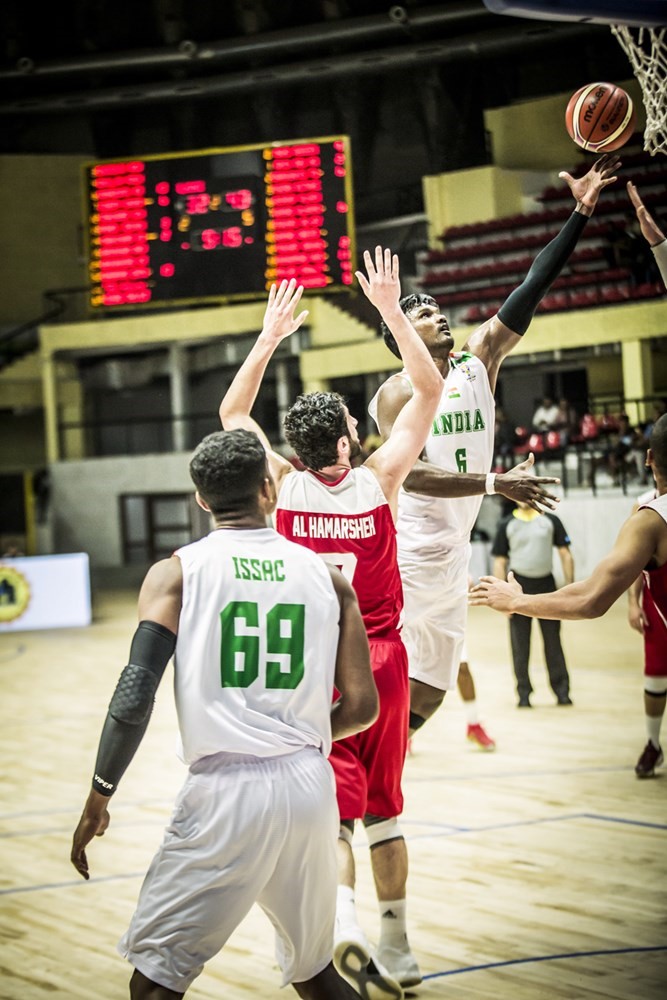
The role of the big man in basketball has undergone perhaps its biggest evolution since shot-blocking became acceptable. They used to get the ball while posting up or when they’d secure the rebound. While we’ve had playmaking bigs over the decades, they are now expected to be able to hold the ball, survey the floor and make the right reads, and get the ball where it needs to go.
“In Indian basketball, we used to mainly see the point guard take care of playmaking. But if the forwards are able to share that role, they can do wonders for the team,” says Pandey. “Of course, the point guard is the primary ballhandler, but it's a great support if your bigs are able to help them when needed. When you can give the ball to your tall players, you can let them use their size to read the defence and make plays. That also gives rest to the point guards and by them not being pressured to create on every possession.”
Annadurai is averaging 3 assists per game in the FIBA Asia Cup qualifiers, tied for 6th best with Amjyot Singh Gill among all forwards in the competition. Assists aren’t a complete indicator of playmaking, there are dozens of extra passes made each game that doesn’t directly result in a basket. Unselfish ball movement is the hallmark of great teams, you need players willing and capable to move the ball to help the offense flow. Our bigs provide ample support to our guards in this regard, India as a team had 22 assists in both of the last two games in the FIBA Asia Cup, for 30 & 31 field goals vs Lebanon and Iraq.
“When you're playing inside, it's important to know how to read the offense and defense. You will be guarded by two people if you are close to the basket, you have to know how to make the right pass to your teammates,” Pandey says. “This is where it’s important to be able to play with your back to the basket and also turn around and have a face-up game. Then you can see the entire floor and make passes across the court.”

Aravind started off as a back-to-the-basket player, over time he worked on adding a face-up game. When you establish position down low, receive the ball and then turn around to face the rim, you get to create some space between you and the defender. The defense has two choices really, either step in to close that space and risk you driving by them. Or stay back and give you room to shoot over them.
“After my injuries, I worked on more ways to be effective from the outside. But going inside to score and make plays is a very natural thing for me,” says Annadurai. “In every practice, I shoot a hundred three-pointers. But in the games, I like to go inside more. We have much better shooters on the Indian team.” One of the better shooters he’s referring to has recently been a flamethrower for India. Annadurai often finds himself on both ends of an assist with the sharpshooting Muin Baig, his teammate from Tamil Nadu. “Muin and I have built up good chemistry from playing in the senior nationals for the Tamil Nadu team, we have a very good team. There are also job opportunities through basketball in Tamil Nadu, that also helps to get good players and gives players a place to keep working on their game.”
It’s a common sight to see either of them put the ball on the floor and find the other for an open bucket, having played together for so long. “Muin is like a silent killer, you can’t tell how the game is going for him by his expression, but he’s very focused.” When Baig made those step-back 3s vs Bahrain, Annadurai wasn’t in the least bit surprised. “He works very hard on his shooting and building lower body strength, we expect those shots to go in for him and our shooters as we know the work they put in. Our team is better now when it comes to shooting.”
India will need all the offense we can get to get to the FIBA Asia Cup, with our final opportunity to qualify coming soon.
The road goes on
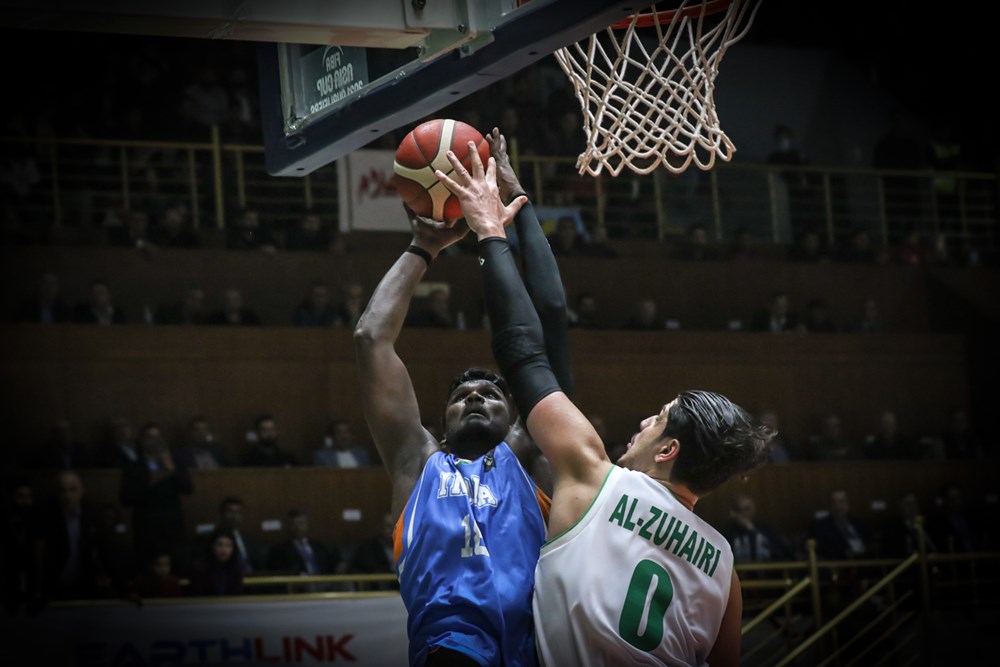
India has played six games in the FIBA Asia Cup qualifiers thus far, going 2-4 with our two wins coming vs Iraq and a pair of losses vs Bahrain and the undefeated Lebanon. Annadurai ended up playing the entire 40 minutes vs Iraq in the second game, putting up 21 points, 8 rebounds, 5 assists, and 4 steals. India was without Amjyot Singh in the first two games, and without Amritpal Singh in the last 4 games. Annadurai missed the 2nd window of the games with an injury too. For the final opportunity to qualify, all three players are in the Indian camp currently, giving a huge boost to the team.
“The first day when I was back, I could barely run. Amjyot gave me the ball on a fast break, I couldn't get to it," recalls Annadurai. "Coach (Veslin) Matić asked me if I'm feeling any fear of getting injured. I told him I'm good to go. I wasn't sure how much I'd be able to play. At first, coach told me to play for 5 minutes, we'll take a break and then try again and see how it works. But by the time the games started, I felt like myself again and was able to contribute.” Contribute he did, putting up 19 points, 9 rebounds, and 3 assists vs Lebanon along with his solid play vs Iraq. The last 4 games have also seen our rotation increase, from going 8 players deep to having at least 11 players see playing time in each of the last 4 games. That helps in keeping the legs fresh and gives us contributions from all across the board.
“Earlier the rotation was a bit smaller, now more players are playing and we press harder also as players are fresher. Coach Matić has been really good for us. Seniors or juniors, he treats everyone equally. Different coaches have their own ways of training the team, Coach Matic has us do a lot of the basic fundamentals. In every practice, we work on the fundamentals for an hour, and we spend a lot of time shooting.” Annadurai says.
The entire qualifiers have fewer games than two potential rounds of an NBA playoffs 7-game series. The performances we see can go up another level with the players playing in more professional games in India and abroad or playing more exhibition games. While exhibition games against foreign teams can be harder to put together, a professional basketball league is something Annadurai and Indian basketball hopes to compete in soon. Annadurai plays for the Income Tax Department team in Chennai, but a pro league would bring the kind of competition and exposure that the country is waiting for.
“It is my dream to play in a professional league, in India or abroad, I just want to compete. I had an opportunity in the 3BL, but could not go at that time. It will be very good for basketball in India to have a professional league. Where players can compete and train together, have more job opportunities, get more exposure, and we'll have very good Indian players coming from all over the world to compete. If we have a league, then only people will know about the players and the game. More young players will get the opportunity to play. We'll get to see a lot of good players come up from rural areas,” says Annadurai.
For all the buckets Annadurai scores for India, for all the rebounds he muscles down and steals he pulls in, one of the most inspiring and remarkable statistics of his game is the most unremarkable stat of all- minutes played. To spend one minute on the basketball court to represent the Indian basketball team, Annadurai had to spend hours each day for months on end at different points in his career in rehabbing. All that rehabbing does is it lets you move around, Annadurai then had to get back into fighting shape and shake off the rust that immobility of injuries placed upon him.
What could be easier than chalking your injuries up to fate and riding off into the sunset with the glories you accumulated? Like rockstars who die young and are immortalized, we never get to truly see their potential pan out and are left with the legend of what could have been, a legend that keeps growing as there is no basis, in reality, to actually see what they would become. What except pure love for the game can keep pulling you back up every time you get knocked down? To rebuild yourself so strong that you are still the spear at the helm of the charge on both ends, doing the little things needed to win and putting up monster numbers when asked to.
There is no one you can count on to play every game like it's their last than someone for whom so many games almost became their last. Aravind Annadurai loves to hoop, is proud to represent his country, and each minute he shines on the court is a testament to his unflinching resilience.
Check out Annadurai's Hoop Story Highlights Mixtape-
Warning: Undefined array key "preview" in /home/dh_gq5vzm/sidbreakball.com/wp-content/plugins/oxygen/component-framework/components/classes/comment-form.class.php on line 79